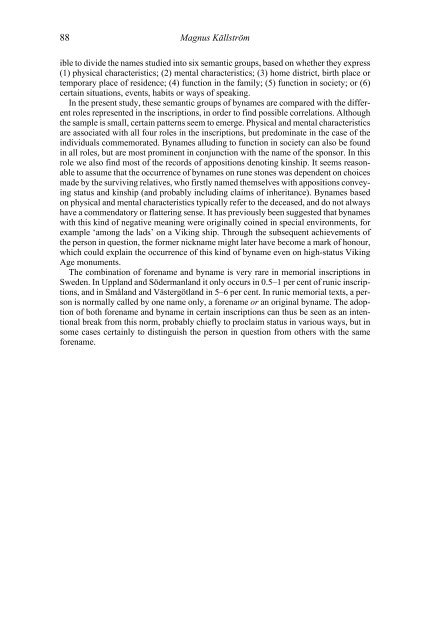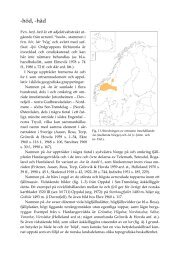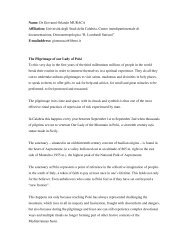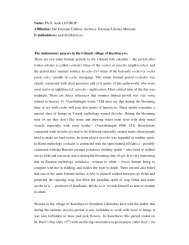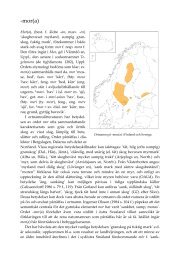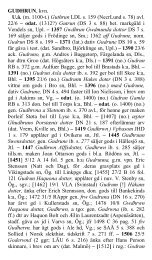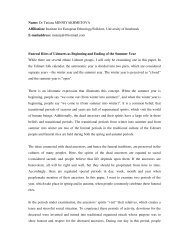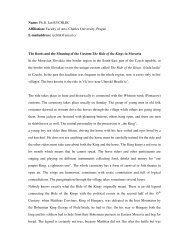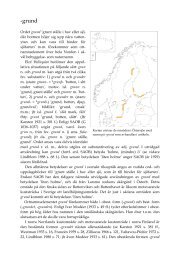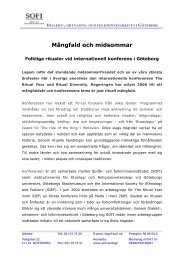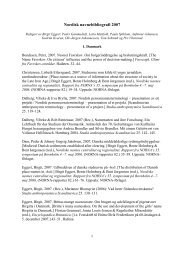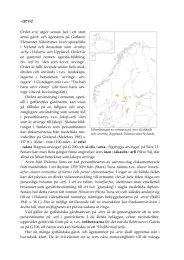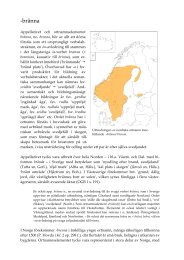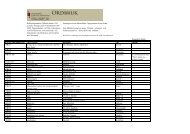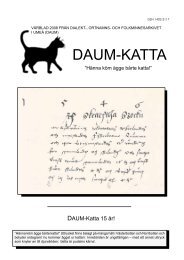NORNA-RAPPORTER 88 Binamn. Uppkomst, bildning, terminologi ...
NORNA-RAPPORTER 88 Binamn. Uppkomst, bildning, terminologi ...
NORNA-RAPPORTER 88 Binamn. Uppkomst, bildning, terminologi ...
Create successful ePaper yourself
Turn your PDF publications into a flip-book with our unique Google optimized e-Paper software.
<strong>88</strong> Magnus Källström<br />
ible to divide the names studied into six semantic groups, based on whether they express<br />
(1) physical characteristics; (2) mental characteristics; (3) home district, birth place or<br />
temporary place of residence; (4) function in the family; (5) function in society; or (6)<br />
certain situations, events, habits or ways of speaking.<br />
In the present study, these semantic groups of bynames are compared with the different<br />
roles represented in the inscriptions, in order to find possible correlations. Although<br />
the sample is small, certain patterns seem to emerge. Physical and mental characteristics<br />
are associated with all four roles in the inscriptions, but predominate in the case of the<br />
individuals commemorated. Bynames alluding to function in society can also be found<br />
in all roles, but are most prominent in conjunction with the name of the sponsor. In this<br />
role we also find most of the records of appositions denoting kinship. It seems reasonable<br />
to assume that the occurrence of bynames on rune stones was dependent on choices<br />
made by the surviving relatives, who firstly named themselves with appositions conveying<br />
status and kinship (and probably including claims of inheritance). Bynames based<br />
on physical and mental characteristics typically refer to the deceased, and do not always<br />
have a commendatory or flattering sense. It has previously been suggested that bynames<br />
with this kind of negative meaning were originally coined in special environments, for<br />
example ‘among the lads’ on a Viking ship. Through the subsequent achievements of<br />
the person in question, the former nickname might later have become a mark of honour,<br />
which could explain the occurrence of this kind of byname even on high-status Viking<br />
Age monuments.<br />
The combination of forename and byname is very rare in memorial inscriptions in<br />
Sweden. In Uppland and Södermanland it only occurs in 0.5–1 per cent of runic inscriptions,<br />
and in Småland and Västergötland in 5–6 per cent. In runic memorial texts, a person<br />
is normally called by one name only, a forename or an original byname. The adoption<br />
of both forename and byname in certain inscriptions can thus be seen as an intentional<br />
break from this norm, probably chiefly to proclaim status in various ways, but in<br />
some cases certainly to distinguish the person in question from others with the same<br />
forename.


